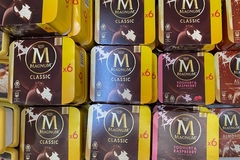
- Industry news
Industry news
- Category news
Category news
- Reports
- Key trends
- Multimedia
- Journal
- Events
- Suppliers
- Home
- Industry news
Industry news
- Category news
Category news
- Reports
- Key trends
- Multimedia
- Events
- Suppliers
EU lowers limits for heavy metals cadmium and lead in baby food and produce

12 Aug 2021 --- The EU is heightening its food safety regulations for baby formula and food, vegetables, fruit, cereals, meat, fish and other produce, which will be screened against stricter limits of cadmium and lead content before they are released on the market.
Cadmium and lead are toxic metals found naturally in trace amounts in a lot of soil, which are taken up mostly by root in vegetables and fruits. They are present across various food items, but not considered dangerous for human health when consumed below certain limits.
The EU has now lowered these limits for a long list of food products in a bid to reduce exposure to carcinogenic substances, says the European Commission in a statement, following scientific advice.

“We know that an unhealthy diet increases the risk of cancer. Today’s decision aims to put consumers at the forefront by making our food safer and healthier, as we pledged in the framework of the European plan to fight cancer,” says Stella Kyriakides, health and food safety commissioner.
New limits to be enforced
The stricter limits for cadmium will be enforced starting from August 31, while those for lead will be introduced on August 30.
 Cadmium and lead are toxic metals found naturally in trace amounts in a lot of soil, which are taken up mostly by root in fruits and vegetables.Food products that contain these metals in concentrations beyond these new limits – which entered the market before the implementation of the new rules – are permitted to be sold until the end of next February.
Cadmium and lead are toxic metals found naturally in trace amounts in a lot of soil, which are taken up mostly by root in fruits and vegetables.Food products that contain these metals in concentrations beyond these new limits – which entered the market before the implementation of the new rules – are permitted to be sold until the end of next February.
The main source of cadmium exposure for non-smokers is food, highlights the European Commission. The toxic heavy metal is present in the environment, both naturally and as a result of agricultural and industrial activities. It is predominantly found in foodstuffs such as fruits, vegetables, cereals and oilseeds.
Lead, meanwhile, is found across several foodstuffs such as wild mushrooms, spices and salt.
Global push for food safety
Concerns for global food safety have not abated during the COVID-19 pandemic. Last April in the US, the Food and Drug Administration (FDA) similarly unveiled an action plan “Close to Zero” to reduce heavy metals and other toxins in baby food.
Because fruits, vegetables and grains can “take up” toxic elements in the environment from the water, soil, and air, there are limits to how low the levels can be reduced, flags the FDA.
Exposure to toxic elements depends on the levels of the elements found in foods as well as the amount of the food consumed.
The agency also points out that parents making their own baby foods could result in higher concentrations of toxic elements.
Compared to a single consumer, food manufacturers have more capability to implement strategies that lead to using ingredients with lower concentrations of toxic elements.
In February, the US baby food industry hit back at a report from The Committee on Oversight and Reform that said infant foods are tainted with dangerous levels of toxic heavy metals.
Last year, the FDA revealed that the amount of infant rice cereals that do not surpass its recommendation for inorganic arsenic levels rose to 76 percent in 2018, up from just 26 percent earlier in the decade.
Meanwhile, a study recently found that half of UK rice contains more arsenic than the European Commission regulations for rice meant for the consumption for infants or young children.
By Benjamin Ferrer










